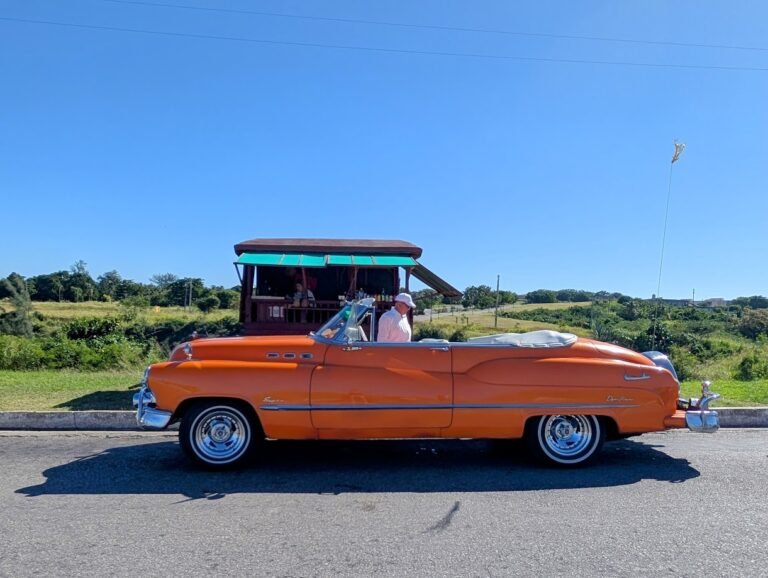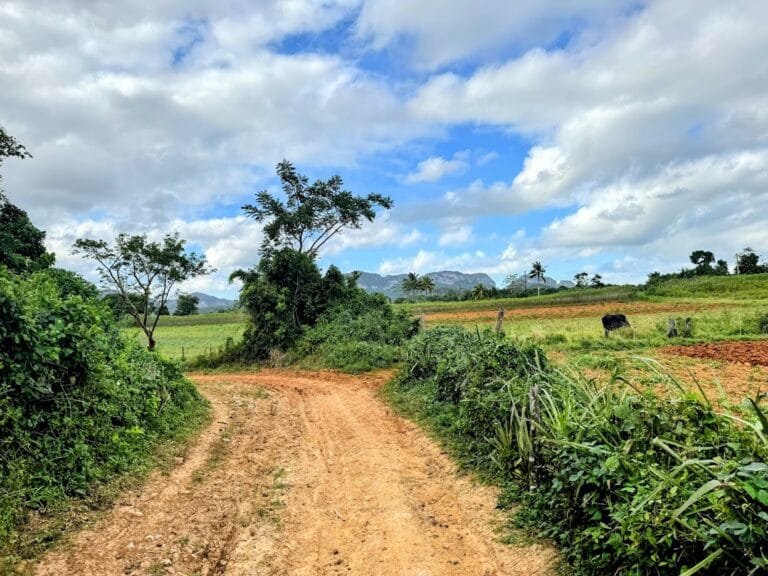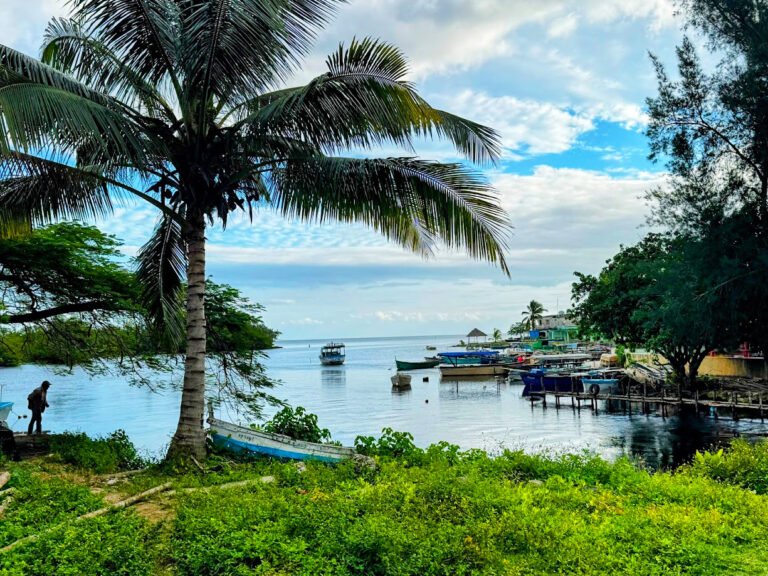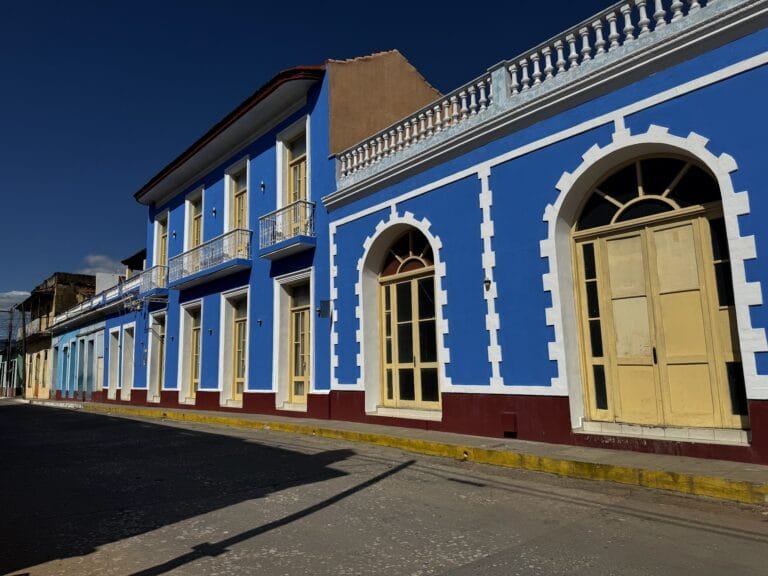Cuba isn’t the kind of place you just show up and wing it —being prepared before you go is key. I looked at countless blogs, websites, and videos to make sure I was as organized as possible.
To save you all that time and effort, I’m sharing my top tips and travel itinerary to make your planning a whole lot easier. Drop me a comment on any of my videos if you have any questions!

My top 10 Cuba Travel Tips
1. Don't forget Visa and insurance
Getting a visa is mandatory before you go. This is easily done online. We applied for the eVisa and received it in less than 48 hours, but I’d recommend applying a few weeks in advance to be safe.
- Cubavisa UK (this is who I used)
- eVisa-Cuba
Once you’ve received your visa, you will be given a code to complete an Advanced Traveller Form (or Dviajeros form). This will need to be completed before arrival in Cuba.
Finally, you’ll need to have travel insurance to enter the country. I’d advise getting insurance specifically for Cuba to be safe (and not rely on credit card or other general policies). Just a basic policy will do, we went with Admiral and paid £30 each for the trip.
Very importantly, make sure you print out all these documents and take with you for your arrival in Cuba.
2. Casas and accomodation
Stay in casas and book in advance if you have a set schedule.
You will need to have a hotel or casa pre-booked for your arrival in the country. The authorities ask for this, and it’s also required when applying for the eVisa. Note, if you are American and want to visit, you are not allowed to stay in hotels as they are government owned. You will need to book a casa, which is the best option anyway in my opinion!
We used Airbnb and hotels.com to pre-book all our stays. I personally wanted the certainty and early choice of where we stayed. Many people don’t do this and book as they go along with the help of their casa hosts. We also printed out a copies of our booking confirmations (better to have this and not need it!) It’s useful to make sure you have the contact number for your casa in case the taxi driver can’t find the exact location.
3. Getting around - use Shared Taxis
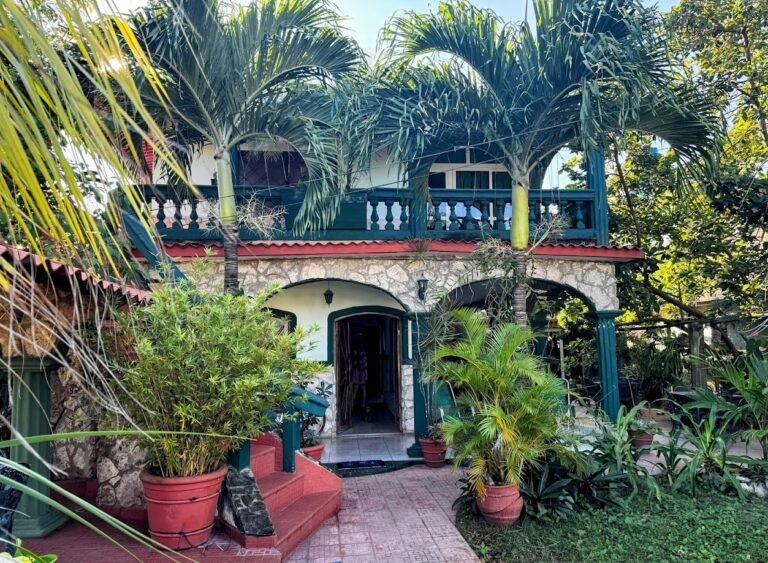
Take shared taxis and book through your casa.
Friends of mine rented a car in Cuba, and we certainly thought about it, but in the end we decided against. There is no shortage of taxi options, so you’ll have no issues booking at very short notice. Your casa host will be your source for almost everything, including arranging the taxis for you!
In hindsight, I’m so glad we opted not to self-drive. Firstly, they have a shortage of good cars, most of them are very old and any new ones imported are in short supply.
Secondly, the road conditions are not always the best and trying to drive on these roads in an old car, no way!! If anything went wrong good luck getting it sorted.
Lastly, on almost every route there are security check points. The taxi drivers drive these routes daily and have no issues passing through. However, a tourist might not have it so easy, and I know friends who had to give money to security to pass.
My advice…. don’t self-drive, it’s not necessary and using local transport is also a great way to help their economy and meet people! Fuel can often be in short supply too, so you may have difficulties or long queues to fill up.
Shared taxis might sound inconvenient or strange, but they are the most popular and best way to get around. My advice would be to order a shared taxi through your casa. For those on a tight budget buses are possible, but you’ll need to account for much longer travel times.
Maps.me – download this app before you go. It works offline and worked great in all the cities we visited (unlike Google or Apple maps).
4. Internet - Get an Esim and VPN
Get an eSim in advance and don’t rely on Wifi.
Firstly, try not to rely on the internet too much, Wifi is unreliable and there are frequent power outages,. Having said that mobile networks work well, so would definitely advise getting an eSim. You can either get one before you arrive or buy a physical sim card in Cuba. There is a place in Havana airport that sells these and places in some of the bigger cities, but to avoid the hassle, we got an eSim before we left, and it worked immediately on arrival, which is another bonus.
Having an esim was so helpful, particularly for last minute research or contacting people/places when needed. Data is relatively expensive compared to other countries, but still worth it! We would have really struggled without it.
GigSky – Not many places offer Cuba esims, but Gigsky works well and is what we used. (Use code CHRI1958 and we both get free credit)
VPN – Many websites and apps will be blocked in Cuba, so without getting too techy, it’s worth getting a VPN before travelling too. It’s very easy to setup using something like NordVPN which we used. You can probably get away with just the free trial too!
5. Bring cash
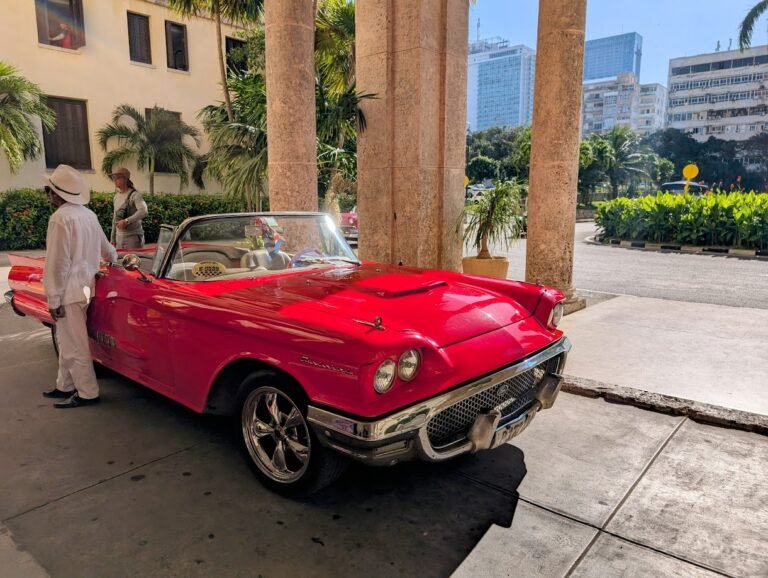
Take the money you need for the whole trip in cash (in USD or EUR)!
Taking cash is essential as cards aren’t accepted in most places and trying to get cash out while you are there will be difficult and expensive.
They do accept USD or EUR and treat each the same so $1 is €1. While we know there is an actual exchange difference, there it doesn’t matter. We ended up bringing $2500 for 14 days and came back with $800.
It feels like a crazy amount of cash to carry around, but it’s much better than trying to take money out while you are there. Booking all accomodation beforehand (and paying online) helps reduce the amount you need to take.
It’s also important to have some (or most!) of that money in small denominations. Most places are not going to have change for $100 so bring lots of $20, $10, etc. We also arranged to have some of our USD converted to CUP upon arrival. Our casa hostess in Havana arranged for this, so when we arrived, we gave her $150 and got the CUP equivalent (HUGE stack of cash!!). We actually never converted cash again, because many places that accept USD will give change back in CUP.
In hindsight I wish we had converted more to CUP as near the end of the trip we had spent it all and some places didn’t accept USD or if they did, they had an awful exchange rate that was not worth it.
Be mindful of the exchange rates being given at different places. It varies widely and sometimes what they are quoting is awful. The rule of thumb we were is that $1 to 300 CUP is pretty standard, anything less than 300 CUP is below the market. For example we were quoted $1 to 150 CUP at one restaurant, half of the market rate and we walked out!
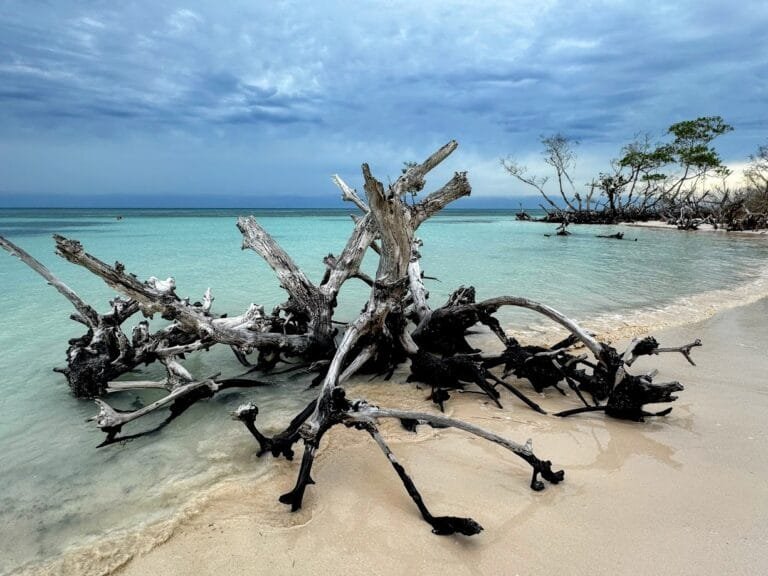
6. Bring everything you need
Bring all the toiletries, medicines and accessories you need.
Unfortunately, due to sanctions and embargo restrictions, Cuba is left without many of the essentials and toiletries we take for granted. Shops are literally empty. Some casas will have things like shampoo and conditioner, but others will not. I advise to bring everything you could need with you eg shampoo, conditioner, body wash, medicines, hand sanitizer, insect repellent etc.
We used every bit of what we brought. I can’t stress enough the necessity of bug repellent and if you are super susceptible to mosquitos (I am) bring some antihistamine tablets with you too. We also brought several packs of tissues that proved very necessary as toilet paper is not always available. Something I wish I brought was a small torch. Every place we went incurred small power outages and we frequently found ourselves using the torch on our phone to get around. An actual torch would have been much better.
If you bring too much of this stuff, I recommend leaving it with your casa. They will be super grateful!
7. Food
Take snacks and plan ahead if vegan!
Snacks – For the same reasons noted previously, you won’t find convenience stores on every corner and good luck finding a grocery store, so I would recommend bringing some snacks with you. We brought granola bars, crackers, nuts and crisps with us – basically anything packaged. We were very grateful to have these during our day trips and walking around the cities. I will note you can buy bottled water there pretty easily!
Eating Out – There are plenty of restaurants and bars in all the cities we visited. We are pescatarian and as Cuba is an island there is plenty of fish and seafood. While not impossible, I would say that vegetarians and more so vegans will have a bit of a tougher time. May be worth researching places that offer these dietary restrictions before you go.
I would suggest eating at your casa when they offer it. One of the best meals we had the entire trip, we had at our casa. We loved it so much we ate at there two nights in a row!
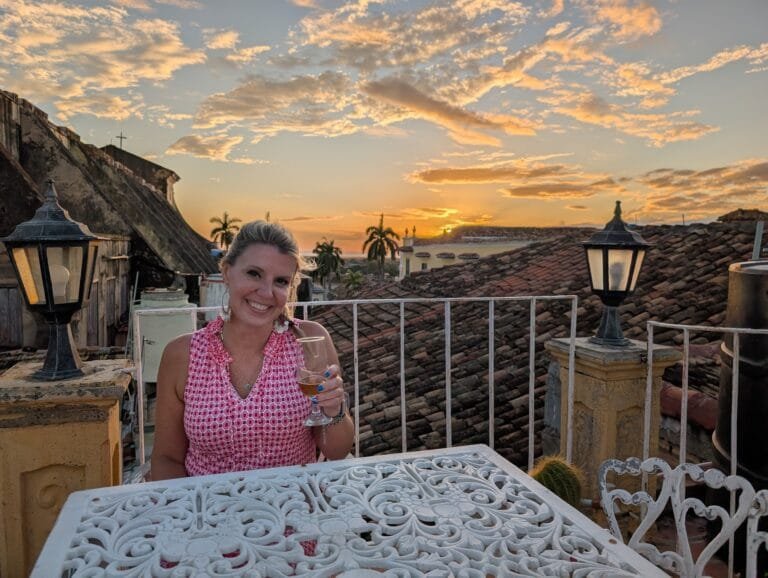
8. What to Wear
Take shorts, long sleeves for the evening, and hiking sandals.
Given its location in the Carribean, Cuba has great weather year-round. We went in mid-November and wore shorts the majority of the time. I would suggest bringing one pair of thin long pants and one long sleeve shirt with you to protect yourself from the mosquitos, especially when visiting some of the beach areas.
You will also want to take hiking sandals. I bought an inexpensive pair on Amazon and they were perfect for hikes through forests and even more essential for getting in and out of rocky swimming areas!
We packed very light, only bringing a carry on bag, so we did need to wash clothes a few times. Many casas will offer to wash clothes for a small fee, or even better it might be included as part of the stay. I also brought some washing sheets that you add to water to hand wash things!
9. Casa hosts are your travel agent
Organise everything through your casa.
The host at your casa can sort everything for you, from day trips and shared taxis to restaurants and recommendations. If you want to book another casa at your next destination they can also help! It’s a like an interconnected network of travel agents!
10. Cuban people and spanish
Brush up on your spanish and embrace Cuban culture
Cuban people are super friendly and helpful and love to chat to you, even if just to practice their English. They might try and sell you their services, tours, recommend their friends restaurant, but you can politely refuse, and they will respect that. It was courteous to just listen and talk to them, as many just want to talk and have banter so don’t’ be too dismissive. Many are grateful you are there bringing tourism to their country!
Google Translate – If your Spanish isn’t the best, I’d recommend downloading Spanish to English translation on Google Translate so you can use offline. Many cubans speak english, but not all and it was extremely helpful in situations where we couldn’t understand each other, as well as when we needed to read spanish eg at Museums!
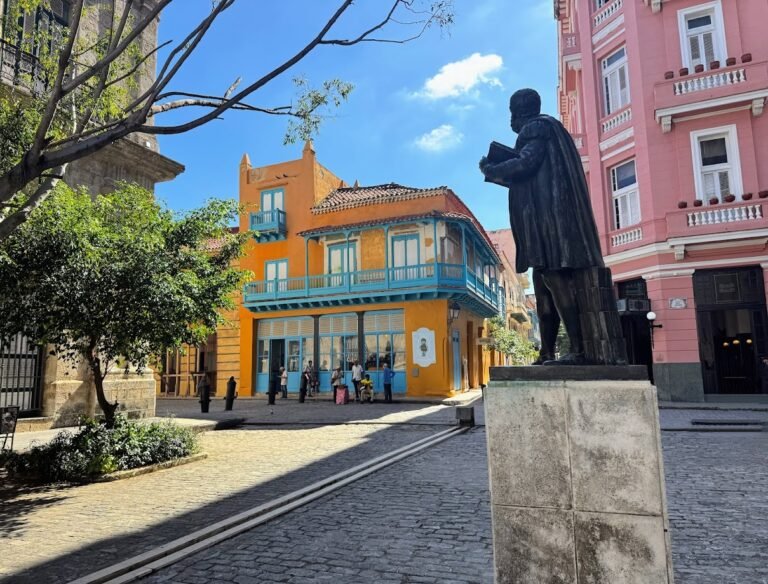
Our 2 week Cuba Itinerary
We spent approximately 12 days and 13 nights in Cuba, so just less than 2 weeks, starting and finishing in Havana. Here’s our itinerary and highlights which I hope helps with your planning. In hindsight, I would have loved one extra day in Trinidad, but otherwise would change very little.
Don’t forget to check out the separate blogs and videos for each destination.
Havana - 2 days / 3 Nights
- Classic Car Tour
- Walking through the Old Town
- Hotel Nacional
- Lunch at Malecon 663
- Drinks at Floridita.
Where we stayed: Fentons – The Boutique Casa.
Onward journey: 3.5 hour shared taxi from Havana to Vinales.
Vinales - 2 days / 2 nights
Highlights:
- Horseback riding and cigar plantation tour
- Day trip to Cayo Juitas, dinner at Cubar
- Music and drinks at Jardin del Arte Sano.
Where we stayed: Casa Particular Romero y Dalia “Ficas Ali”
Onward journey: 4.5 hour shared taxi from Vinales to Playa Larga (via Havana)
Playa Larga (Bay of Pigs) - 3 Days / 3 Nights
Highlights:
- Enigma de la Roca
- Cueva de los Peces
- Museo Giron
- Relaxing on Playa Caleton
- Incredible dinners at our Casa.
Where we stayed: Casa Tu Familia Cubano.
Onward journey: 2.5 hour shared taxi from Playa Larga to Trinidad.
Trinidad - 2 days & 2 Nights
Highlights:
- Old Town
- Day trip to Parque El Cubano, Javira Waterfall and Playa Ancon
- Drinks and sunset at La Nueva Era
- Dinner at Restaurante San Jose
Where we stayed: Hotel Casa Nancy
Onward journey: 2.5 hour shared taxi from Trinidad to Matanzas
Matanzas - 1.5 days / 1 night
Highlights:
- La Botica Francesa – Pharmaceutical Museum
- Paseo de Narváez
- Castillo de San Severino
Where we stayed: Casa D’Mancha.
Onward journey: 3 hour drive from Matanzas to Havana.
Havana - 3 days / 2 nights
Highlights:
- Capitol Building
- Castillo de la Real Fuerza
- Walking to Vedado
- Dinner and drinks at Mitchifu
